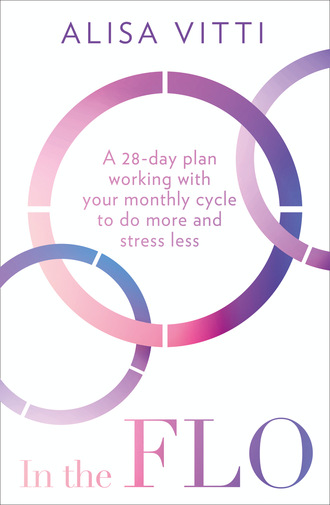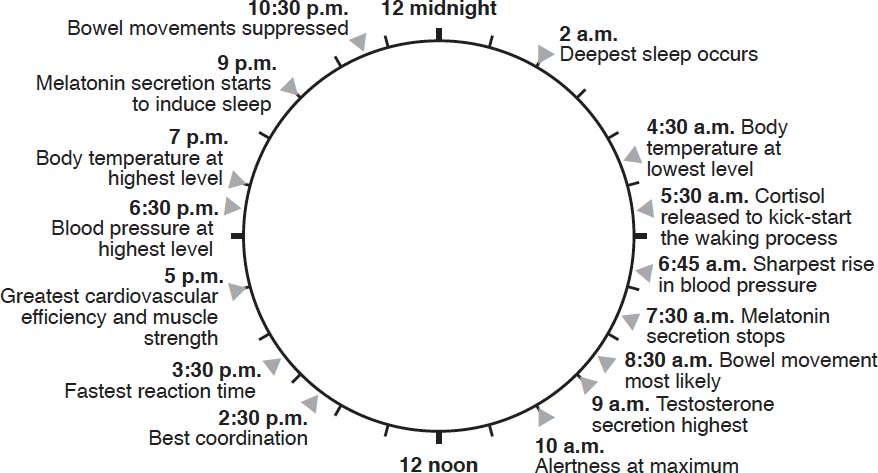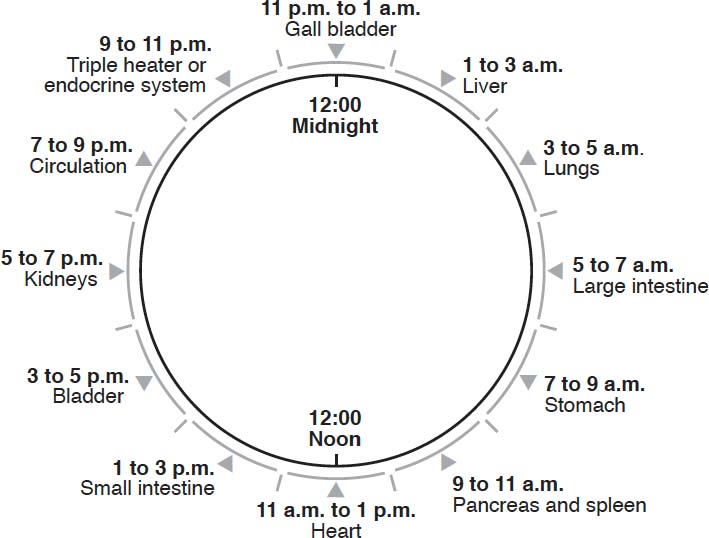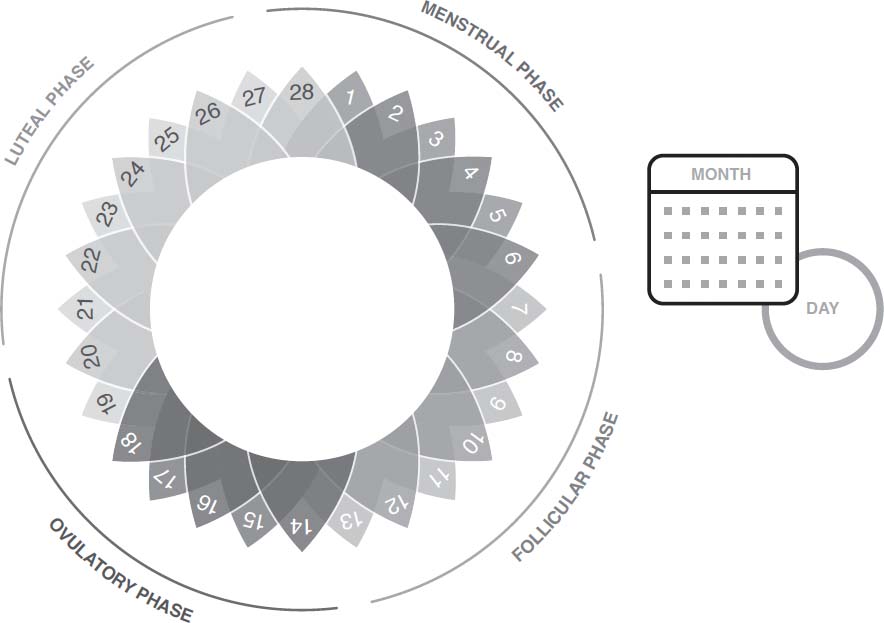
Полная версия
In the FLO
Functional medicine involves a variety of testing followed by food and supplement modification to heal a body system that is in crisis, restoring homeostasis so that the body can perform normally. For example, if you have a diagnosis of PCOS or fibroids, there is an imbalance in the endocrine system that needs support. Initial healing work is essential to get your body back to normal endocrine performance. This is a form of biohacking to restore homeostasis and health.
The Cycle Syncing Method™ is about working with your body’s natural processes to both optimize your health and your life without adding anything to the body system. Because you have a second clock, you have an internal code, or “preferred performance pattern,” in your body. All you have to do to feel the best possible way and to live the life you want for yourself is to align with this pattern and support it as much as you can. You don’t have to try to extend your energy in a 24-hour pattern, because you have the expanse of 28 days to play with. When you run out of energy today, you can stop and rest, knowing that you have a whole variety of energy and creativity to play with over the whole month. This form of biohacking is about aligning with your body’s biological rhythms, and it’s much more collaborative, grounding, anxiety-reducing, and embracing of your feminine energy.
Free Your Feminine Energy for Change
Today’s patriarchal society doesn’t really offer a clear space for this powerful female energy that creates continuous change. But you can make space in your own life the way I did—carefully, thoughtfully, intentionally. I let the truth of science guide me. And science shows me that I am designed to be strong, emotionally attuned, analytical, insightful, creative, playful, nurturing, spontaneous, dynamic, and reliable. Only when we learn how to leverage our natural patterns are we able to thrive in our bodies, our careers, and our relationships, so we can live our optimal lives.
When enough women tap into this personal power, we can collaborate and begin to drive change in our culture to reflect our needs and values of sustainability and well-being—increasingly critical issues for a society moving toward increased dependence on technology and increased damage to our environment. As we head into a future in which more women are rising to positions of power, it is more important than ever to make sure our education about how we self-reference and perform self-care matches the truth of our biology and empowers us. We need to give ourselves permission to lead like women and embrace our dynamic energy to help us champion the changes our world so clearly needs.
I’m constantly surprised that every women’s event or conference—whether focused on business or wellness—does not always include panels, segments, or presentations about hormones and mental health, hormones and energy, or hormones and wellness. I’m always so happy when the people in charge of the conference realize this topic has been left out inadvertently and create some space for it. As we include this in our conversations, we shift how we feel about our female biochemistry.
In fact, we live in an amazing time for periods! Millennials and celebrities are opening up on social media and other platforms about their experiences riding the “crimson wave” and are truly breaking down all the bloody barriers that hold us back from knowing how our bodies work and what’s possible for them. But it’s also a fascinating time as next-generation advances in technology—think artificial intelligence (AI), artificial simulation of the menstrual cycle, and “BioBags” to grow babies outside the uterus—seem to be paving the way for a future where life can be created artificially in response to the decline in everyone’s hormonal health. It’s up to us to protect our hormones and our cycles now and for the seven future generations genetically affected by the self-care choices we make today.
This is the conversation we need to have, not the one we got in our severely inadequate sex ed class, not the one about the “curse.” I actually count myself lucky that as a preteen I never got “the talk” from my mom. She never mentioned one word about menstruation to me. But because I didn’t get the talk, I had no preconceived notions about menstruation being dirty or something to be ashamed of. So when I heard about this mysterious monthly visitor for the first time in my sixth-grade class (a few years before Mr. Bing’s biology class), I was absolutely enchanted. “Ah-mazing!” I thought. I couldn’t wait to start having a cycle. My organic reaction to the idea of having a period was utter joy and enthusiasm. I thought of it as a gift, not a curse. That’s the experience I want for you and for all women—to find the joy in our cycles and to use it to heal our symptoms and help us live our best lives.
CHAPTER 2
Break Free from the 24-Hour Clock
The psyches and souls of women also have their own cycles and seasons of doing and solitude, running and staying, being involved and being removed, questing and resting, creating and incubating, being of the world and returning.
—CLARISSA PINKOLA ESTÉS
I think we’re all wired to try to figure out how to be happy. I remember that in my quest for happiness, I stumbled across an important concept: most of us are going about being happy the wrong way. It’s the “have-do-be” concept. Essentially, we believe, as I sure did, that once I had acquired a goal (like the perfect weight, or the right job, or quality friends), then I’d do all the things I wanted to do (like wear a bikini to the beach, have lots of money to spend, go out and do fun things), and then finally I’d be happy! The truth is, however, that the process works in the opposite direction. While I understood this concept intellectually, it was a whole other thing to actually live it. I’m from New England—maybe there is something in the water up there that makes a person want very practical solutions to esoteric questions. I wanted to know how to generate feelings of well-being and enjoyment consistently. It turns out that the answer was waiting for me all along in my biochemistry.
In the previous chapter I revealed how misinformation about our biochemistry is preventing us from taking advantage of the natural competitive edge women possess. In this chapter I’ll unpack a fundamental truth about female biology that most women are ignoring: while children, men, and postmenopausal women are operating on a single biological clock, women of reproductive age are blessed to have two powerful inner clocks that create an organic framework for optimizing our energy, nurturing our creativity, maintaining our health, and making sustainable our productivity. Just as we now appreciate taking serious care of our circadian clock, it is equally critical to take care of your monthly hormonal clock, as you’ll see in this chapter. Honoring both these clocks can help you access the gifts of your cyclical nature so you can optimize your performance and achieve more with less effort and less stress. On the other hand, continuing to ignore your second clock can ravage your health and make it harder for you to experience more flow and ease in your life.
Chronobiology and You
I’ve always been fascinated by chronobiology. It’s the field within biology that seeks to understand the cyclical phenomena in organisms and their adaptation to physiological rhythms. The term comes from the ancient Greek words chronos, the word for time, and bios logia, the study of life. These cycles are known as biological rhythms and they impact anatomy, physiology, genetics, molecular biology, behavior, epigenetics, reproduction, and even our planet’s ecology. Basically, everything is affected by this action of cycles and timing, and yet we don’t get exposed to this perspective when we are learning about basic biology as we’re growing up. Timing is essential for many key biological processes: from sleeping to cellular regeneration and even bacterial activity, its impact on your well-being is enormous. We should all have a basic understanding of the timing of our bodies’ functions.
In addition to most of us not having a strong understanding about this field of study, we usually only hear about one of the timing cycles: the circadian rhythm and its connection to the solar rhythm. Circadian is from the Latin words circa (around) and diem (day), describing the solar cycle of one day. Of course, there are some cultural reasons behind this cycle being so well-known compared to others: the sun, from Greek mythology to modern religion, has always been associated with male power. Unfortunately, due to this patriarchal agenda and the association between the menstrual cycle and lunar rhythms, the menstrual biological rhythm has become culturally devalued to the point where we’re not even taught its proper name.
Well, here it is. Your menstrual cycle is an infradian rhythm, a cycle longer than a day. There are also ultradian rhythms that refer to cycles shorter than a day, like REM cycles and growth hormone cycles. Lunar rhythms are actually a separate cycle, and, from a chronobiological standpoint, they typically refer to tidal activity. The facts that our bodies are 80 percent water and women observe a correlation between their infradian rhythm and their lunar cycle mean that there might be more connection there than we have research for currently. However, because they have been associated together historically and they don’t fit well with religious and patriarchal values, we don’t know much about our biological rhythms, and we ourselves don’t believe they have much value.
But science transcends cultural narratives: what you’re about to learn is a real and missing piece of your understanding of your biology, and as such you can feel confident in reclaiming your hormonal advantage and revolutionizing your life accordingly. We’ve all learned how to orient ourselves around a day and to connect with the timing of the world outside. We need to learn to leverage our infradian rhythm for our success and well-being—we need to learn to connect with our inner timing.
Meet Your 24-Hour Clock—the Circadian Rhythm
Let’s look at your 24-hour clock first. Inside all of us—women and men—we have a circadian rhythm that regulates our daily bodily processes, including digestion, body temperature, metabolism, sleep, elimination, and the production of certain hormones. This circadian clock kicks into action the day you’re born, and continues ticking day in and day out throughout your entire life. Michael Breus, in his book The Power of When, explores how the circadian rhythm reigns over your body’s processes—cuing cortisol to spike in the morning to rev you up, boosting alertness in late morning, and secreting melatonin around 9 p.m. to help you wind down for sleep. Here’s a breakdown of how your 24-hour clock primes your body for a variety of processes throughout the day:

In traditional Chinese medicine, the organs also have peak activity times during the day, and practitioners use this clock to understand which organs need extra support:

A master timekeeper, which is composed of a cluster of about 20,000 neurons, is found in the brain’s hypothalamus and keeps all of these internal processes in sync. For science geeks, this structure is called the suprachiasmatic nucleus, or SCN. Throughout human history, this circadian clock has dictated our daily lives—prompting us to wake when the sun rises and sleep when nighttime falls.
Our modern-day lifestyle, however, is increasingly at odds with our inner clock. Ever since Thomas Edison patented the light bulb in 1879, we’ve lived in a world of never-ending bright light. Want to go dancing until 2 a.m.? Write your screenplay at midnight? Eat dinner at 10 p.m.? No problem. But when our lifestyle doesn’t sync with our circadian clock, it can impact our well-being and has been associated with a litany of physical, mental, and cognitive issues, according to numerous studies. For example, a 2014 paper in International Review of Psychiatry linked circadian misalignment with an increased risk for cardiovascular disease, diabetes, obesity, cancer, depression, bipolar disorder, schizophrenia, and ADHD, and research in the Annals of the New York Academy of Sciences found that any disregulation of our circadian clock could potentially trigger metabolic, autoimmune, or mood disorders.

CONDITIONS LINKED TO A CIRCADIAN DISRUPTION INCLUDE THE FOLLOWING:
• Cancer • Small intestine bacterial overgrowth • Cardiovascular disease • Diabetes • Depression • Obesity • Bipolar disorder • Irritable bowel syndrome (IBS) • Attention deficit disorder (ADD) • Inflammatory bowel disease • Attention deficit hyperactivity disorder (ADHD) • Gastroesophageal reflux disease (GERD) • Schizophrenia • Ulcers • Lack of alertness • Gut dysbiosis • Reduced cognitive function
Our daily timekeeper has been deemed so critical to our health and well-being that three scientists were awarded the 2017 Nobel Prize, the world’s highest scientific honor, for pinpointing the gene that keeps this daily timekeeper ticking. Now that the rest of us understand how important it is to sync with our circadian rhythms, we’re taking action to avoid anything that disrupts our 24-hour clock. We’ve inadvertently deregulated our circadian clock and have gotten to a point where we have to biohack our lives to reverse the damage. Just look at how popular those glasses that filter the blue light from our tech gadgets have become. It’s common knowledge now that the blue light from all our devices is messing with our sleep. But many of us don’t know that blue light diminishes the pineal gland’s ability to make melatonin, which can disrupt ovulation and decrease fertility.
Becoming more aware of how critical it is to live in tune with our circadian clock is great, but women need to understand that we have a second clock that is equally important. Unfortunately, this clock hasn’t received nearly the same amount of attention from the scientific community or the media. In fact, this second clock has been largely ignored, and we’ve been left in the dark about its inner workings and its profound impact on our health, moods, and performance. It’s time to change that.
Say Hello to Your Second Clock—the 28-Day Infradian Rhythm
As a woman, you’re blessed with a second clock, starting at puberty and continuing until you reach menopause at about age fifty. It deeply impacts your experience of life for approximately forty years. This infradian rhythm is tied to your monthly menstrual cycle, which includes four distinct phases—follicular, ovulatory, luteal, and menstrual. The same way your circadian clock plays a role in your daily bodily functions, your 28-day infradian clock influences your brain chemistry and physiology, providing you with unique gifts and strengths at different times of the month.


Your two clocks are tightly linked. The four phases of your cycle influence your 24-hour circadian rhythms, and vice versa. For example, did you know that hormonal fluctuations affect your body temperature, sleep patterns, and heart rate throughout your cycle? On the flip side, your 24-hour clock plays a role in how well your 28-day clock functions. Any disturbance in your 24-hour clock can disrupt your 28-day cycle, leading to problems such as irregular periods and longer menstrual cycles.
As we’ve seen, mountains of research show that living out of sync with your circadian clock can damage your physical and mental health. The same is true if you ignore your monthly cycle. Neglecting this vital inner infradian clock exacts a heavy price from your hormonal, physical, and mental well-being. In addition to the influence of endocrine-disruptive chemical exposure, trying to fit into a 24-hour pattern by ignoring our own hormonal needs is taking a dramatic toll on our bodies. Just look at the numbers:
• Five million women suffer from polycystic ovary syndrome (PCOS).
• Seventy to 80 percent of women will develop fibroids by age fifty.
• One in ten of women will suffer from endometriosis during the reproductive years.
• Nine to fourteen out of one hundred women have heavy periods.
• Ten percent of women experience period pain so intense they can’t perform everyday routines.
• Twelve percent of women of reproductive age have difficulty getting pregnant or carrying a pregnancy to term.
• About 600,000 women undergo a hysterectomy every year.
• Women are five to eight times more likely to have thyroid problems.
• More than 75 percent of all people diagnosed with autoimmune diseases are women.
• As many as 50 million women suffer from one or more neglected chronic pain conditions.
• Women are twice as likely as men to have chronic fatigue syndrome.
• Women account for up to 90 percent of all people with fibromyalgia.
• Eighty-five percent of chronic migraine sufferers are women.
• About two-thirds of Alzheimer’s disease patients are women.
• Women in their childbearing years are more than twice as likely as men to develop an anxiety disorder.
• One in eight women experience depression in their lifetime, twice the rate as men.
For optimal health and performance, you need to learn as much as you can about your second clock and then nurture it with phase-specific self-care. Syncing with your monthly clock is the key to taking full advantage of your cyclical nature for the three to four decades when it forms the foundation of your life. Before puberty and after menopause, it’s your circadian clock and static hormonal pattern that guide the rhythm of your life and allow you to engage in more gender-neutral biohacking. During your reproductive years, however, you need to biohack like a woman.
A Better Way to Think About Time
When you have two biological clocks, you also need to rethink your relationship with time and time management. Are you struggling to balance career, family, friends, volunteer work, workouts, and self-care? Are you constantly stressed trying to wade through your to-do list? Do you feel like there aren’t enough hours in the day to get it all done? Want to stop worrying about time, get more done, and actually enjoy what you’re doing? The secret lies in timing your life with your second clock in mind rather than simply adhering to the 24-hour clock.
I know what you’re thinking. Sounds too good to be true. We’re all tired of the media telling us we can “have it all,” when we’re just trying to get through each day intact. I understand. I’ve got a lot on my plate: I’m a mom, a wife, a daughter, a business owner, an author, and a speaker. I have a vital self-care practice. I love to cook. I love to read. I can easily get overwhelmed by my to-do list. The fact is that the “you can have it all” credo is steeped in the conditioning that women must “do it all” to earn love, acceptance, and security in our patriarchal society. In a culture that ignores the wisdom of our second clock, what else could we expect? However, when you yourself insist in your own life that you orient everything you do around your 28-day clock, the pressure to do it all and have it all simply drops away. Rushing in to fill the place of that pressure are discernment, desire, and an increased quality of life. Before I incorporated my second clock in my life, if I had a major deadline or project due, I would just push myself to the point of misery and exhaustion to get it done and deal with the health consequences afterward. After I started orienting my life around my second clock, I changed my approach; for example, when I came back on the speaking circuit following the birth of my daughter, I’d schedule those talks only during my ovulatory phases to make sure I didn’t burn myself out too quickly.
This change is not some big thing—it’s a million little moments when you include your female reality in the choices you make, reclaim your sovereignty, and increase your enjoyment and well-being. I know for a fact that I couldn’t perform at a high level, or attempt to accomplish all that I do, if I weren’t managing my time and energy in a cyclical fashion. Before I realized I had to honor my second clock, my hormonal problems had drained my energy to the point where I was barely able to accomplish the basics of daily living. Just getting off the couch to go to a doctor’s appointment required a monumental effort. After years of syncing with my cycle, I’ve learned how to plan ahead to stay in a peak flow state as much as possible. I prime my body with cycle-specific self-care and schedule my days, weeks, months, and year with the four phases of my cycle in mind. I hold brainstorming meetings on the days when my creative energy is highest. I slot my speaking engagements for the dates when communication skills are on point. I tackle detail-oriented tasks during those times when awareness and attention are locked in. I take stock of how I’m doing and where I’m heading in the phase when changes in my neurochemistry encourage self-analysis. Most important, this practice demands that I make choices continually about what works for me and what doesn’t. Making these choices is a huge departure from what I had been conditioned to believe, which is simply that I should do everything asked of me at all times. It’s not realistic or healthy to have so few boundaries that there is no room left in your life for yourself, your dreams, or your desires.
Let me give you another example of what cycle syncing looks like in my life. In the days before my period, my energy turns inward and I’m less inclined to socialize, start new projects, or power through my to-do list. What do I do? Instead of stressing about how to squeeze it all in, I do something that feels pretty rebellious to me: I glance at my list, pick the two or three things that absolutely must get done, and move the rest to another day. That’s right. I cross them off the list. Yes, it can feel a little scary to jump off the hamster wheel when we’re so conditioned to always do more, but with that one move, I go from super-stressed to relaxed. With less on my list, I’m able to get in the groove on those few very important things. And those tasks I crossed off my list have been shifted to a day when my cycle naturally fills me with more energy and more ability to tackle them.

